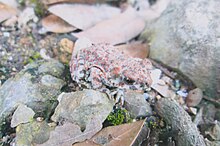
The Colorado River toad, formerly known as the Sonoran Desert toad, is found in northern Mexico and the southwestern United States. It is notable for exuding toxins from glands within its skin that have psychoactive properties.
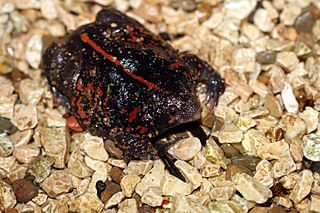
This frog belongs to the Family Rhinophrynidae and Genus Rhinophrynus. Rhinophrynus dorsalis is the only living representation of the family Rhinophrynidae. This family is also known as the burrowing toads, and is evidently a small and specialized taxonomic group. Organisms in this family will have specializations for a burrowing lifestyle such as pointed snouts for digging into the ground, strong and short limbs, and tongue specializations for eating ants. This family spends most of its time underground and comes to the surface only for mating. Its closest sister group is Pipdae, or the aquatic clawed frogs.

The American toad is a common species of toad found throughout Canada and the eastern United States. It is divided into three subspecies: the eastern American toad, the dwarf American toad and the rare Hudson Bay toad. Recent taxonomic treatments place this species in the genus Anaxyrus instead of Bufo.
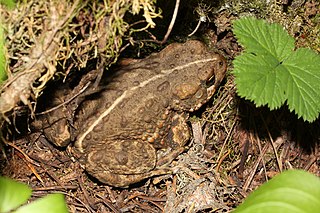
The western toad is a large toad species, between 5.6 and 13 cm long, native to western North America. A. boreas is frequently encountered during the wet season on roads, or near water at other times. It can jump a considerable distance for a toad. Breeding occurs between March and July in mountainous areas, and as early as January in lower-elevation regions. The female lays up to 17,000 eggs stuck together in strings that adhere to vegetation and other objects along water edges.

The arroyo toad is a species of true toads in the family Bufonidae, endemic to California (U.S.) and Baja California state (México). It is currently classified as an Endangered species on the IUCN Red List of Threatened Species because of habitat destruction.

The southern toad is a true toad native to the southeastern United States, from eastern Louisiana and southeastern Virginia south to Florida. It often lives in areas with sandy soils. It is nocturnal and spends the day in a burrow. Its coloring is usually brown but can be red, gray, or black. It is approximately 8 cm (3 inches) long.

The Texas toad is a species of medium-sized toad that occurs in the southern United States and northern Mexico. It breeds in temporary water pools after heavy rains.
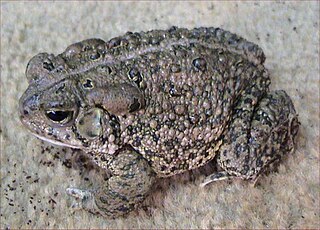
Woodhouse's toad is a medium-sized true toad native to the United States and Mexico. There are three recognized subspecies. A. woodhousii tends to hybridize with Anaxyrus americanus where their ranges overlap.

The North American green toad, Anaxyrus debilis, is a species of toad found in the southwestern United States in the states of Arizona, New Mexico, Colorado, Kansas, Oklahoma and Texas, as well as in northern Mexico in the states of Tamaulipas, San Luis Potosí, Durango, and Zacatecas. It is commonly called green toad.

The Great Plains toad, Anaxyrus cognatus, is a relatively large species of true toad native to central North America.

The Canadian toad, also known as the Dakota toad, is a species of toad that ranges from the prairie regions of western Canada south to parts of the United States upper midwest. It belongs to the family Bufonidae, the "true" toads. Its specific name is derived from the Latin word hemiophrys, meaning eyebrow, which refers to its pronounced cranial crest between and behind the eye. Anaxyrus hemiophrys displays the typical toad characteristics, they lack a tail and teeth, they have horizontal pupils and their dry skin is thick and warty.
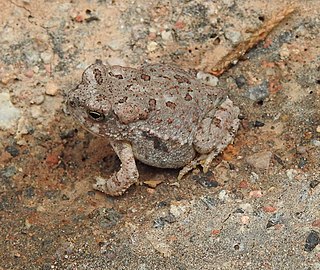
The Arizona toad is a species of toad in the family Bufonidae. It is endemic to the south-western United States, where its natural habitats are temperate lowland forests, rivers and streams, swamps, freshwater marshes, freshwater springs, ponds, open excavations, irrigated land, and seasonally flooded agricultural land.

The oak toad is a species of toad in the family Bufonidae. It is endemic to the coastal regions of southeastern United States. It is regarded as the smallest species of toad in North America, with a length of 19 to 33 mm.
The Sonoran green toad is a species of toad in the family Bufonidae. It is found in northern Mexico and the southwestern United States.

There are 14 species of amphibians and 5 species of reptiles known to occur in Mount Rainier National Park.


